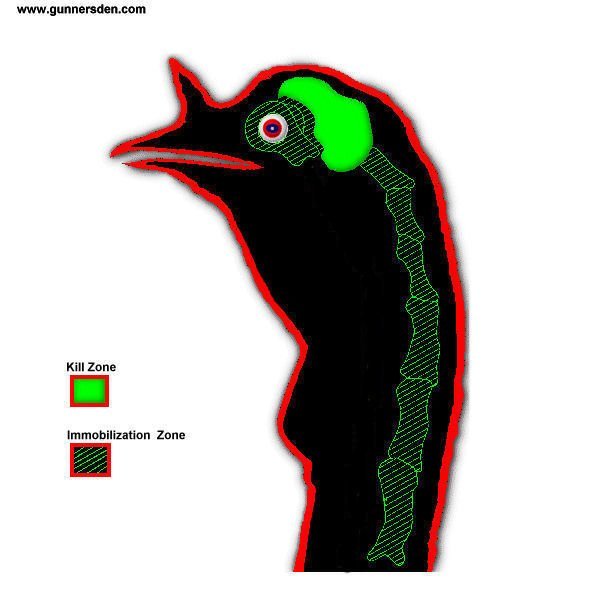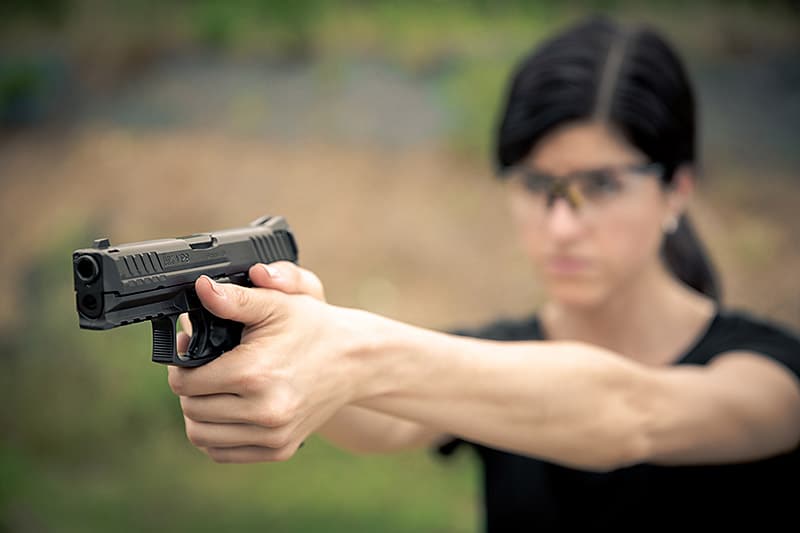
The comb adjustment for point-of-impact is an easy and effective way to change the trajectory of a shot. One common method to alter the height of a comb is with a cast-off or a Shim system. Depending on the results, different adjustments may be needed. This article will cover three methods for point of impact comb adjustment. We'll also cover a simple, yet effective, casting-off method.
Use a shim to raise or lower the comb
The simplest way to adjust the shotgun's point of impact is to raise or lower its comb. To raise your comb, remove the stock bolt first and then insert a small shim. Next, insert a thin strip of shim such as a flat toothpick made from wood. A piece of adhesive-backed moleskin can be used.

To adjust the height of your comb, you will need to first establish whether the shim will increase or decrease in height. These shim kits can be used to adjust the height of your comb. A shimkit will raise the comb up to one inch at a given time. Recoil pads can be used to adjust the cast and height of the comb.
Cast-off
The simplest way to alter the point of contact of your rifle is to use a compass. You will need to aim your rifle at an object at a distance in order to adjust the comb height. The target should be about 16 yards away. Once you've established the correct compass elevation, adjust the casting of your gun. To adjust your rifle's impact point, increase the comb by one-eighth inch. To adjust for the difference in shooting direction, raise the length of the comb by an inch. To confirm your shooting position, you can also perform a sheet test.
Many new shotguns feature a cast-off comb adjustment. Cast-off combs can shift your point of impact up or down to compensate for the shooter's facial structure. Cast-off combs are especially useful for right-handers with large chests and wide spaced eyes. The cast-off combing can also be used in conjunction with a casting gun.

Using a figure 8
A fig 8 is a good choice for point of-impact comb adjustment. However, there are disadvantages. You'll first need to adjust your vision picture. If you adjust the comb to center of figure-8, there won't be any significant change in your POI. Second, you'll need to move your eye.
FAQ
How many people hunt rifles in the US
It is estimated that around 2 million hunters hunt with rifles each year.
Most of these hunters are male and between 18 and 56 years old. They also come from rural areas.
They typically hunt alone, using either a bow or crossbow, and they usually hunt during daylight hours.
Hunters target most often whitetail deer (68%) followed by muledeer (13%) or black bears (10%)
Although there is no national data on how many women participate in this activity, anecdotal evidence suggests that participation rates among female hunters are increasing.
Can I take my dog with?
Most states prohibit dogs from being hunted together with humans. However, some states have laws allowing this practice. This practice is not allowed in all states.
In addition, some hunters do bring their pets along. Some hunters find that having a pet allows them to relax while they hunt. Others believe that a companion helps them avoid getting lost.
However, bringing a pet along may cause problems. Dogs can chase after animals and may even attack the hunter. Also, wild animals may attack the pet.
How much training is required to become a hunter. How long does it take to complete?
Basic courses are required in order to learn how you can hunt. This course teaches you about different types of game and gives you information about the laws surrounding hunting.
You will learn how you can safely use ammunition and firearms. Instructions will also be provided on how to safely use these weapons.
The course can last anywhere from 2 weeks to 3 months. Some courses can only be taken online. Other courses are available in person.
You must pass a written exam to be eligible for a license. You may also need to show that you have completed a hunter education course.
How much does it take to get licensed? What if I don’t make enough money?
The cost to get licensed depends on where you live. The cost of licensing can range from $20 to more than $100.
If you do not have enough money, you may be able to apply for a loan or grant.
You will also need to pay a tag. The price of tags varies depending on the game you are hunting.
Tags are available for deer, elk, bear, moose, waterfowl, upland birds, and furbearers (such as foxes).
Some states require registration with the Department of Natural Resources to be eligible for a license.
To ensure that you comply with all regulations, it is important to check the local laws before you start hunting.
Which state is home to the most deer hunters in America?
Wyoming is home of the most deer hunters. It also sells the most hunting licenses annually.
South Dakota is home to the second-most deer hunter state. It is third in the number of hunting licences sold each year.
New Hampshire is home to the most deer hunters. It ranks last in terms of the number per capita of hunting licences sold.
Statistics
- According to the Wildlife Restoration Act, passed in 1937, most of the state conservation efforts are funded through hunting and fishing license sales and firearms sales. (stacker.com)
- Indiana, for example, saw a 28% jump in turkey license sales during the first week of the season. (stacker.com)
- Over the past 50 years, the number of hunting licenses in California has been on a rapid decline, falling 70% from more than 760,000 in the 1970s to under 268,000 in 2020—even as the state's population has skyrocketed, according to The Mercury News. (stacker.com)
- In less than 20 years, Rhode Island saw a 40% drop in the number of hunting licenses for residents, according to The Valley Breeze. (stacker.com)
External Links
How To
How to build a Deer Blind
A deerblind is a type hunting device used for hiding from game animals, such as deer, elk, and so on. The blind consists of a small enclosure, usually made of canvas or wood and often covered with branches and leaves. The hunter hides in the enclosure and waits to see if the animal passes. For hunting at night, deer blinds are often used.
You can find deer blinds in many sizes and shapes. Some blinds can be moved easily while others require a permanent structure. They are typically constructed out of materials like plywood, cardboard, plastic, canvas, or metal.
The most commonly used type of deerblinds is the box blind (also called box stand), which consists of a wooden box with roof and walls. Boxes are very popular because they are easy to construct and transport.
A tree stand, another type deer blind, is also available. Tree stands are designed to look natural so that no one would suspect they were there. Most tree stands are permanently attached to trees.
Ground blinds, similar to tree-stands but built into the ground, are another option. Ground blinds may be camouflaged with grass or dirt, rocks, or even sand. Ground blinds can also be called "ground boxes".
There are several different ways to hunt with a deer blind. The first is to wait for the animal, then sit still. Another way is to move around and try to scare the animal away. If this is your preferred method, keep quiet and don’t move too often. This could lead the animal to think you're a predator and run off.
A deer blind can only be used in a specific spot. Choose a spot that isn't likely to blow your scent towards animals. Avoid areas that are frequented by hikers.
You should also know how to set up the blind properly. This is because you don't want the animal to run away from you.